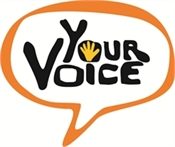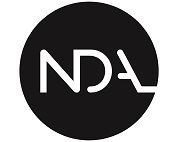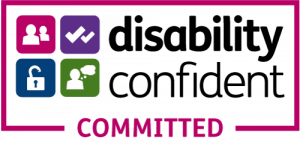Men can be powerful allies for inclusion.
On the 15th of October, 2017, Alysia Milano tapped in fewer than 140 characters into her smartphone “if you have been sexually harassed or assaulted type “me too” as a reply to this tweet. Within 24 hours, the hashtag #Me Too had been tweeted nearly half a million times. This was a simple act of speaking up: thousands of women spoke up to say “Me Too” to workplace harassment such as unwanted physical advances (actions) or repeated judgmental gender comments (words): workplace sexism. Under the 2010 Equality Act, direct discrimination happens when an employer treats an employee less favourably than someone else. This is conscious and intentional. Men are fully aware of their words and actions when targeting women at work.
Social global movements like “Me Too” have the power to ignite and move with rapidity in mainstream media, public opinion, and legal courts. Imagine a workplace environment where women speak up, ask questions, debate vigorously and commit themselves to continuous learning and improvement. Some leaders that have thought deeply about creating a psychological safe workplace. This brings the best in both men and women.
I am a man with male gender privilege. My mother was Swedish. She lived with her parents in Tumba, a town dependent on steel production, outside of Stockholm. As a young adult, in the 1950’s, she wanted a career in business as an accountant. My dad persuaded her to join him in England and they married. She never achieved her dream. Instead, she became a mother and housewife. My dad started an advertising company in London, ending his work career owning a fruit machine company. As the son, I was expected to take over the business, not my sister.
I ask you to daydream right now, a perfect dream: You live in a gender equal world which is diverse, equitable and inclusive. A world that is free of gender bias, stereotypes, and discrimination. But what about in the digital world?
“I just wanted to be normal. I did not want to feel hurt. I am in bed that night, I just broke. I felt dirty. I was alone with my feelings. It just hit me, what happened. Why would someone do this? I felt like someone was trying to punish me, manipulated by AI saying and doing things they are not”.
AI-generated fake videos use “deep learning” artificial intelligence to produce images of a false event. Manipulated images can pose a real threat. A real and present danger for democracy. Audio can be “deep faked” too, to create “voice skins” of public figures. The real threat of deep fake is not politics but porn: violation against women. Danielle Citron, a professor of law at Boston University, says “Deepfake technology is being weaponised against women.” The AI firm Deeptrace found 96% were pornographic, 99% “mapped faces” from females. Frame after frame, a new appearance, to mask the person in the original video. Teachers, cops, mums, and teenagers. Once these images are uploaded, they never truly go away. They are out there and there is no way of getting rid of them.
“It was like having a bucket of ice-cold water thrown over me. I was gripped by terror, fearing he would share something so deeply intimate without my consent. I felt so exposed and ashamed. “I am constantly worrying about people are going to see this. I could not tell anyone because no one would understand. Maybe in a way, it’s my fault? I don’t know what they notice. Even though it is virtual, it is causing me physical harm. I feel I am not safe anymore. I don’t want this to follow me through my life.”
Refuge’s Naked Threat survey found that threats to share intimate or sexual images or films has an enormous impact on women’s mental Health. More than 1 in 7 felt more at risk of physical violence as a direct result of the threat to share their intimate or sexual image. Following the threat, 23% of women said the image was then shared, most frequently on Facebook, WhatsApp, Twitter, and Instagram. 63% of women did not report the threats to the police.
We can expect in the future more deepfake videos and sexual images that will harass, intimidate, and strike at the foundations of women’s wellbeing. From 31st January 2024, the Online Safety Act has made the sharing of AI-generated intimate images without consent, illegal. The most shared deepfake images on the internet are non-consensual sexual depictions of women Some of these images are being created and shared by men known to the survivors of this crime.
“I have no idea who did this to me. They could be someone I know at work. Then I was told of another upload of “deep fake me”.
Men watch online porn videos knowing they are deep fake. The pleasure of watching plus imagining the person they know. A new online violation of women?
It’s becoming big business to produce deep fake videos. Several companies will make them for you and do all the processing in the cloud. All they need is to search on your Facebook and Instagram for at least 150 images of you. First, your face shots are processed through an AI algorithm called an encoder, then a second AI algorithm called a decoder creates the “face swop” into a moving image.
How many images of you are out there?
It is important to be aware of how your wellbeing is whilst working in your team at work. Are you feeling good and functioning well at work ?
“On my first day working in this new team, I wanted to make friends. I felt vulnerable. Out of work, I choose my friends whom I admire, relax with, and have fun. With the team, there is no choice: I knew I had to earn their admiration. I worry that people will turn against me. I feel I must deal with all the risky consequences of speaking up.”
It is normal to feel this way, regardless of you are. Worrying about speaking up about anything in your team is a form of silencing. For your wellbeing, that’s not OK.
Your work image is the way you conduct yourself in the workplace. A good image is showing your team that you know what you’re doing and are good at doing it. Your work image is generated not by you but by the judgements made of you by your team members. They assess the “full self package”. Think of your work image as separate from your work role identity and your “whole self-identity” (race, gender or sexuality).
Gender bias is men giving preferential treatment to men: Unwanted conversation which offends women, creating an intimidating or disturbing workplace. Recent research reveals that gender bias is kept alive by managers (two thirds) who think it is no longer an issue. It is mostly an unconscious bias, lurking in the minds of men. It is outside their conscious awareness and control. Why ?
Our brains are not “gendered” at birth, we all are exposed to “gender bombardment” in early life. Children are like little detectives working out what category they belong to, constantly learning from those around them. As soon as they understand what gender they “fit into”, they gravitate towards their gender identity. “Boys gravitate to “blue things” and avoid “pink things”. Despite long being associated with female submission and passivity, the colour pink has been reclaimed in the new Barbie film. Imagine a workplace when it is normal for men to wear pink clothes?
If you act on your gut or a knee jerk reaction, there is a chance of opening up your “unconscious bias box” in your mind. We act on deeply ingrained stereotyped attitudes formed early on in our lives. Our brains are hard wired for unconscious bias: to automatically make connections between two ideas: a mental shortcut helping us to process information through prediction. So, we slot people into categories such as gender. This makes men treat women differently.
At work this can bias male managers in regards performance support: offering men more resources and opportunities. Appraisal bias: where women receive less constructive criticism, or their performance review is more focussed on characteristics rather than their actual skills and abilities. Imagine such bias was gone, would not company productivity and efficiency significantly improve?
Gender stereotyping are generalised negative attitudes or preconceptions of female characteristics. “under pressure, men drink alcohol and invade other countries; women eat chocolate and go shopping”. But such stereotype crude attitudes are far more subtle in the workplace.
Many jobs in the economy are gender stereotyped. “I’m not bossy, I’m the boss.” announces Beyoncé in a video in support of the #banbossy campaign. The campaign highlights how when little boys take charge, they’re often praised for being a “leader.” But when little girls do, they’re more likely to be scolded for being too “bossy.” A woman manager is less likely to be taken seriously by the people who work for her. Stereotyping a job as “women’s work” that deny women less authority than men, harms us all. Imagine living in a world where we perform the work that is best suited to our abilities and where an individual in a position of authority receives the same respect, regardless of gender.
Think back over last week, how often did you hear subtle unhelpful gender language? 46% of employees use gender-based terms such as “guys” at work. If you pointed this out it is likely that the honest response would be “we are getting too politically correct around here”. Managers and the workforce who silently prefer men to women is not such a conscious or deliberate choice. Unconscious bias can exist in every level of an organisation. Multi-level gender discrimination deny women a voice in key decision making.
It is important to be aware of how is your wellbeing whilst working in your team at work. Are you feeling good and functioning well at work ?
Imagine your workplace is psychologically safe for women to speak up in the company of men in her team? Identity is our overall idea of who we are: a woman for example. What you see when you look in the mirror and how you picture yourself in your head is your self-image. However, it goes much deeper than that. Self-image refers to how we see ourselves on a social level, how we communicate with others in the workplace for example. Self-image has a lot to do with self-esteem: how we feel about ourselves.
Your work self-image is generated not by you but by the judgements of you by other team members you work with. You maintain your image by contributing information in everyday work social situations. We are all constantly assessing our work image. To cultivate a good work image, it is important to be seen and heard. Think now for yourself: what does your team think of you in regards the following three aspects of your work image?
- Being smart: knowledgeable of the work processes. You know what tasks need to be accomplished in what order and the best strategies to use to complete them.
- Respected as being capable: skilled in carrying out work tasks. 100% capable of achieving whatever function you are meant to achieve. Your task are completed with accuracy, on time and are quick to solve problems as they arise.
- Seen as helpful: a team player. You are liked because you are reliable and eager to help out if the team needs it.
We all automatically, almost without thinking, control what we say or not say to keep our work image positive. This is something we do as adolescents: to look good in front of others. It feels good to be admired. We have a strong need to socially “fit in” with our friends and colleagues. If this happens then how we feel about ourselves (self-esteem) remains high. Feeling good helps us to function well in our work role.
If we experience stress that is overwhelming, anxiety appears. Anxiety is an automatic reaction to an anticipated threat. That feeling of danger means to “survive and protect yourself” you retreat into “safety behaviours”. A safety behaviour can be avoiding that potential threat such as withdrawing from unsafe work conversations or putting on a protective mask that turns your true feelings invisible to others in the team. After weighing up the risks of speaking up, your conclusion may generate “interpersonal fear”. So, we avoid the risk be negatively judged by others in the team. Rather than looking good, we fear looking:
- Ignorant: looking stupid, or feeling you have nothing to contribute. So, you do not ask “silly questions”.
- Incompetant: such as making mistakes at work, missing deadlines, failing to achieve or complete a task. So, you don’t admit to mistakes.
- Disruptive: Causing conflict in the team such as inappropriate comments, criticising others, or a work plan. So, you do not make suggestions or raise a concern.
When next reading the next section of this article, if you are a man, try answering honestly the questions. If you are a woman, what do you imagine might be a man’s response? You are in a team meeting, listening to the spoken conversations, be alert “double messaging”: the implied meaning is hinted at rather than being expressed openly and directly. This implicit (hidden) message is being broadcast at the same time to the team.
You observe a female colleague Ann, speak up, pointing out an organisation system failure, as a concern to her team. Some colleagues respond by belittling her by ignoring or making a jokey banter remark. The implicit meaning was that she is ignorant. Would you say something? If yes, what?
What if Ann went further to say that she knows how to fix the issue and makes a suggestion on how to resolve the issue, permanently. All of your male colleagues respond by patronising her. The conversation that follows seems friendly, but the implicit message is they think they are superior to her: she is incompetent. How would you respond, or would you remain silent? Remaining silent may be due to “social conformity bias”. This happens when people in a team feel the pressure to agree with everyone else in the team. Your change your belief to “fit in” with the team.
If Ann holds her ground, volunteering to take the initiative, asking to personally to investigate further and fix the issue. However, you hear the implicit message that she is now being disruptive. The perception from others is that Ann is causing conflict: she not being a team player. Would you challenge your male colleagues for making the conversation unsafe for her or would you feel it is too unsafe for you to speak up? “Groupthink” takes control. An implicit “male dominated” consensus appears which leads to a dysfunctional group decision. In your experience does this happen a lot more when women like Ann speak up?
Healthy dissent is important in team conversations. In any team, some people are more outspoken, particularly men when women are present as a small minority. Psychological safety is the belief that your workplace is safe for interpersonal risk taking. Teams vary in their psychological safeness, within and between organisations. Your wellbeing purpose at work is to keep personally safe. So, we hesitate, delay, or choose not to speak up in the team or in front of your Line Manager. This is mostly subconscious. You may fear an emotional retaliation: a potential relationship damage if you point out a mistake.
Ann was concerned about an issue. Do many women at work choose silence when the “female voice” is possible. Ann’s moment has passed. Not speaking up to give constructive feedback can result in projects continuing to run over budget or remain behind schedule. Faulty equipment or system errors are not detected and rectified. Mistakes by individuals remain invisible to the company. These service or product mistakes become more serious as a problem, directly affecting the health and safety of people in the workplace.
I have three questions to ask women in a gender unequal workplace world:
- How safe is for women to speak out in your workplace?
- Will male managers embarrass you or indirectly punish you?
- Will male colleagues think less of you for admitting you did not understand something?
For more information on “speaking up” do read Amy Edmondson’s book “Fearless Organisation” and in regards “deepfake”, watch on BBC iPlayer the Storyville’s “another body” my AI porn nightmare”.
Written By Chris Graham – Ce Mind Trainer

















